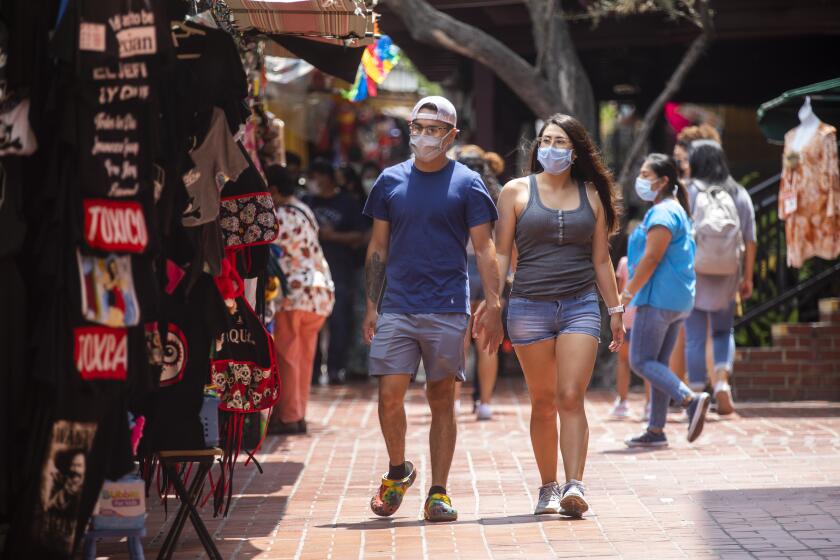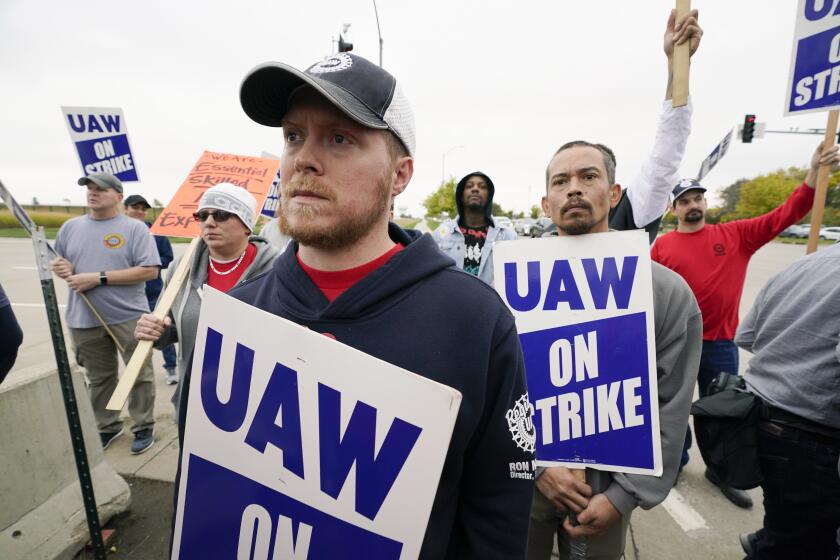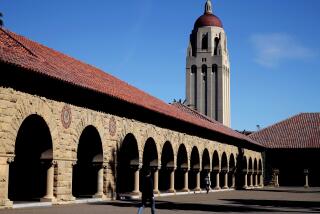California’s job growth took a hit as the Delta variant spread
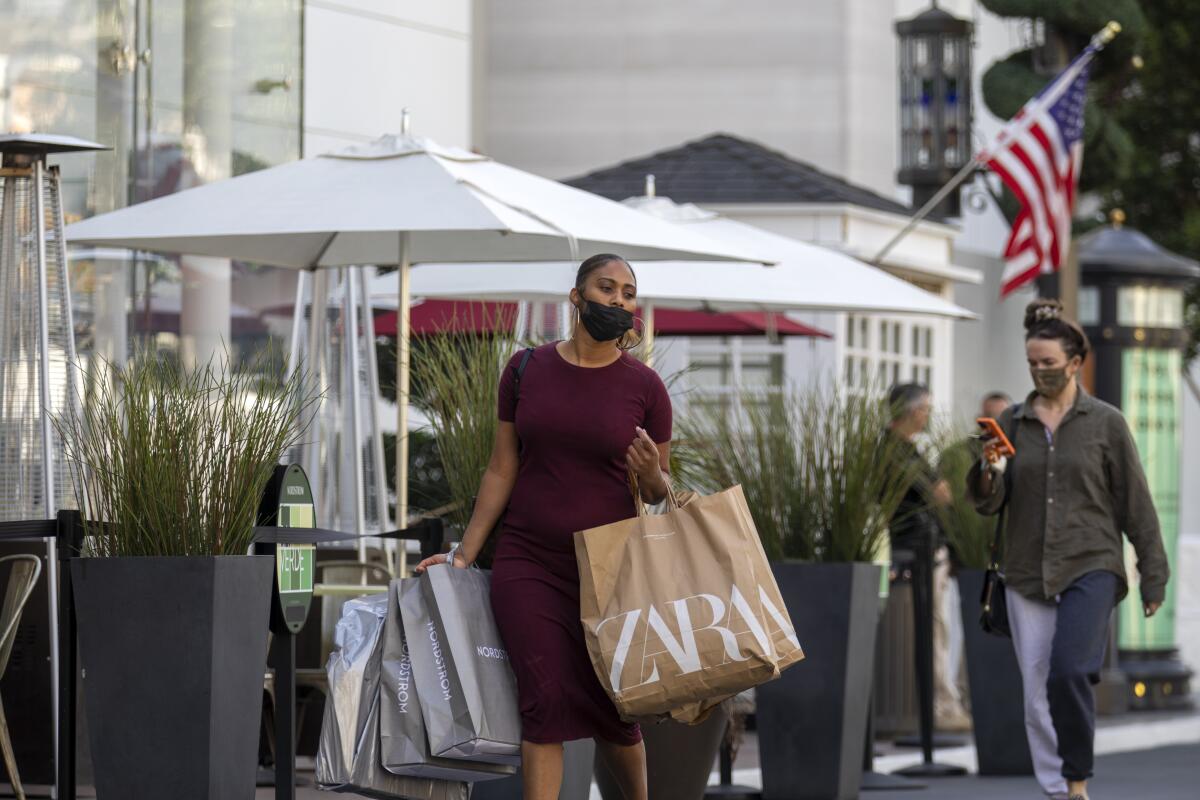
- Share via
California’s job growth slowed last month, and its unemployment rate remained high as the state, still pummeled by the coronavirus’ Delta variant, struggled to recover economic momentum.
Many workers were reluctant to return to their jobs because the virus was circulating in schools and businesses, or because they were looking for safer, better-paying and more flexible positions. Employers cut back on hiring as they failed to attract enough applicants and some customers shied away from patronizing indoor spaces.
“Earlier this year there was a lot of talk that the economy would come roaring back,” said Michael Bernick, a former head of the state’s Employment Development Department. “This was never realistic, given the slow return of small businesses and the slow return of workers.”
California payrolls saw a net gain of 47,400 jobs last month for a total of 16.67 million. That was well below the 94,700-job rise in August, or the 101,500 additional positions the state averaged from February through September this year, state officials reported.
The Golden State has yet to recover more than a third of the 2.7 million jobs it lost when the pandemic hit in early 2020.
But U.S. employment growth was also weak last month, and California’s hiring accounted for nearly a quarter of the nation’s 194,000-job gain.
The coronavirus’ Delta variant has upended the calculations of economic forecasters at UCLA, who have dampened their expectations for economic growth in California and across the country.
Along with Nevada, California had the highest unemployment rate in the nation in September, at 7.5%, unchanged from August. Both states rely heavily on international tourism, which has yet to bounce back.
U.S. joblessness fell sharply to 4.8% last month from 5.2% the month before.
“The pandemic was traumatic for a lot of workers, especially mothers and people working in essential jobs,” said Mary J. Lopez, an Occidental College economist. “Job losses were steepest among Black and Hispanic women. Some people may still not be working due to unreliable and unaffordable childcare, low wages, and mismatches between skills and available jobs.”
In September, California’s coronavirus transmission rates had begun to decline after a summer surge fueled by the Delta variant. But deaths were still rising and hospitals in the Central Valley and rural Northern California were overwhelmed with COVID-19 patients.
Now, to avoid a winter surge, more companies are imposing vaccine mandates on employees. And some communities are requiring businesses to check customers’ proof of vaccination before allowing them into indoor spaces. Nonetheless, many Californians remain hesitant to be vaccinated.
After decades of stagnating wages and diminishing pension and healthcare benefits, many U.S. workers are fed up. A small but growing number are organizing.
California’s labor force, which includes both workers and job seekers, rose by 30,500 in September to 19 million. The increase was “encouraging,” said Lynn Reaser, an economist at Point Loma Nazarene University in San Diego who attributed it to growing vaccination rates, children returning to school and rising wages.
But she noted that the number of those working or seeking jobs remains below its pre-pandemic high by 420,000 people, or 2.2%.
Leisure and hospitality, which includes restaurants, hotels and entertainment venues, suffered the most of any sector during the pandemic but is recovering. The sector added the highest number of positions last month, 23,300.
After COVID-19 hit last year, NewMark Merrill, a Woodland Hills firm with 65 California shopping centers, lost two-thirds of its 2.5 million weekly visitors.
The company and most of its 1,200 California tenants, including restaurants, gyms and clothing stores, got federal Paycheck Protection Program loans. It renegotiated leases, deferring rent, and built 20 outdoor dining areas.
“It was scary,” President and Chief Executive Sandy Sigal said. “But the good news is, we’re back. We can’t pretend like this is over, but we think we’re on the right path.”
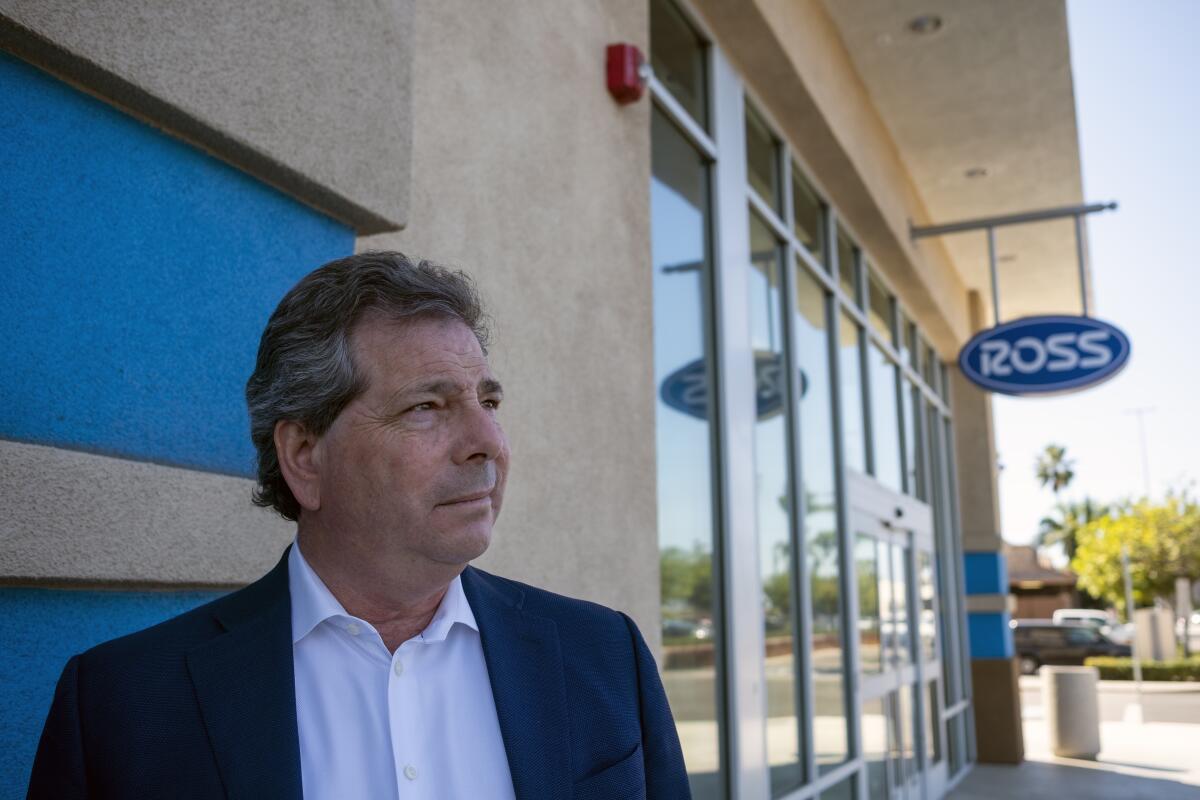
About 40 of his tenants permanently closed shop, but new businesses have replaced them. Foot traffic has returned to pre-pandemic levels.
In spite of the Delta variant, Sigal said: “People want to go outside. They want to shop. They want to socialize. They want human contact.”
Nine of California’s 11 industry sectors added jobs in September. After leisure and hospitality, the largest gain was in professional and business services, with many of the 6,900 new positions coming in computer systems design and architectural and engineering services.
“Other services,” a mixed category that includes religious and civic organizations, suffered the largest decline, 3,700 jobs.
Last week, California’s new unemployment claims rose sharply by 17,570 to 80,707, the highest level in six months. The state accounted for more than 31% of the nation’s new claims. At the same time, U.S. job postings increased by 19.2% above the January 2020 level. In California they were up just 2%.
“Employers may have scaled back their new hire ambitions to focus on keeping the workers they have,” said Pepperdine University economist David M. Smith. “Increasing wages and incentives are also generating churn among the employed who are voluntarily leaving their jobs.”
As big outdoor venues from Disneyland to Dodger Stadium welcome visitors with vaccination and masking rules, many of the Golden State’s small businesses that rely on indoor traffic remain in dire straits.

TriFit, a Santa Monica gym, employed 50 people before the pandemic. Now it has 15 workers. It spent $150,000 to open an outdoor facility on its tennis courts, but half its members have yet to rejoin.
“I have had countless sleepless nights, wondering how long we can hang on,” co-owner Gina Baski said. “Our industry is in complete devastation.”
Baski said she has raised wages by 10% but it has been hard to get people to return to work, as many fitness instructors have opened their own businesses.
“I’ve never had more difficulty hiring in my life,” she said, adding that she is not alone. “I just met a restaurant owner who offered a $1,500 signing bonus for a dishwasher.”
Restaurants and shops where workers earn minimum wage or barely more may be finding it particularly hard to hire, but even a company such as NewMark Merrill, with starting salaries of $70,000 a year, faces challenges.
“It’s not just wages — it’s lifestyle,” Sigal said. “One of the first questions I get is, ‘Can I work at home?’ Well, it’s hard to be a property manager and work at home: You’ve got to go see the property. And I lost a great accountant because someone offered him a work-at-home job.”
In Los Angeles County, the unemployment rate dipped slightly in September, to 9.8% from 10.1% in August. Payrolls grew by 31,500 positions to 4.27 million. More than half the jobs were in education as public schools reopened.
In Orange County, joblessness was 5% last month, down from 6% in August. The county added 8,400 jobs, mostly in public education, for a total of 1.59 million.
In the Inland Empire, spanning Riverside and San Bernardino counties, the unemployment rate was 6.6% in September, down from 7.6% the month before. The region added 7,600 jobs, for a total of 1.53 million. The region is a hub for distributing goods from the ports of Los Angeles and Long Beach, and the largest gain, 5,200 positions, was in the transportation and warehousing industries.
The data, collected in the second week of each month, come from a federal survey of 80,000 California businesses. The unemployment rate comes from a separate survey of 5,100 California households.
More to Read
Inside the business of entertainment
The Wide Shot brings you news, analysis and insights on everything from streaming wars to production — and what it all means for the future.
You may occasionally receive promotional content from the Los Angeles Times.

